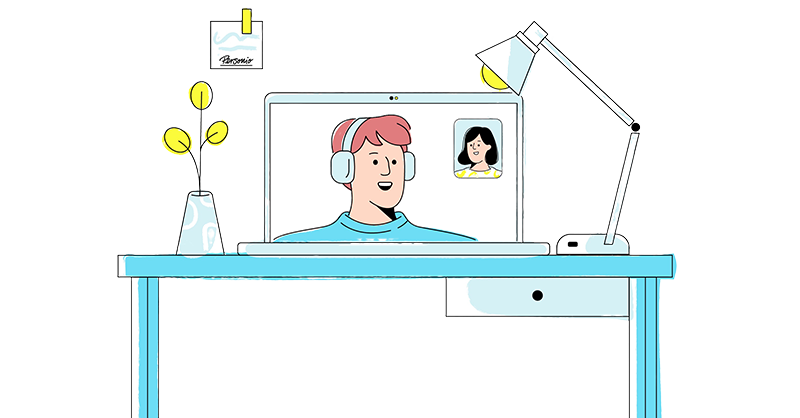Work Environment: 9 Effective Ways To Make Improvements

A company’s work environment significantly affects how well your employees can perform their duties. Stressful environments can cause anxiety and prevent your workforce from performing at their best. The opposite is true of healthy work environments, so taking steps to create such an environment can benefit your business in the long term.
Key Facts
The work environment refers to the physical location and the culture your company fosters for its employees.
Your company’s work environment significantly impacts your employees’ long-term performance.
A healthy work environment cares for its employees’ needs while taking steps to make their voice heard in company decisions.
What Is a Work Environment?
Work environment refers to the diverse components that influence employees’ moods in the workplace. These components include the physical setting surrounding your workers and more subtle things like office politics or workplace relationships. These factors can influence any employee’s performance, whether in the office or remotely, because they must interact with it daily.
Characteristics of a Positive Work Environment
Creating a positive work environment often means catering to your employee’s needs to encourage the best performance possible. The needs of the typical worker tend to shift over time, but basic things you could offer include:
Giving the Option To Work From Home. Remote work is here to stay. Around 20% of UK employees work in a hybrid model, 1 in 5 want to work full time remotely, and job listings for fully remote positions are on the rise by more than 300%. Allowing team members to work from home occasionally or full-time can improve their work-life balance and employee morale.
Letting Employees Control How They Work. Flexible work schedule policies let employees decide when and where they work, giving them more say in their work-life balance. A healthier separation between the professional and the personal can help decrease stress and raise productivity.
Fostering Transparent Communication. Positive work environments foster open communication between employees and employers to promote the free sharing of ideas. Healthy communication ensures team members feel heard while cultivating innovative ideas to help drive company success.
Implementing Relevant Benefits. Generous benefits packages play a great role in shaping a positive work culture. Reasonable PTO, vacation time, parental leave and other perks work to build a stronger connection between the workplace and employees.
Signs of a Toxic Work Environment
The signs of a bad workplace can be subtle, but learning to recognise them is the first step to resolving them in your business. Some traits of a poor work environment include:
Bad Communication. If employees have no idea what’s happening with the company, this can create an anxious environment.
Poor Work-Life Balance. An unhealthy work environment can pile on stress by expecting workers to do more than is reasonable while wanting to maintain a healthy personal life. That can drive employees to the breaking point.
Not Considering Culture Fits. Companies with poor work environments may hire people whose personality clashes with the established culture. A collaborative environment won’t benefit from someone who leads from the top-down, for example. This creates friction between those employees and their colleagues, increasing stress among the workforce.
Poor Benefits. The benefits packages offered by toxic work environments often don’t adequately meet their employees’ needs, and importantly, the benefits won’t shift to accommodate them.
Not Considering Employees’ Interests. An employee’s skills and interests aren’t properly considered when developing a professional development plan. The lack of control over their growth can lead to resentment as they’re made to learn things they aren’t interested in.
Best Practices for Working From Home

In this list of best practices, you’ll learn how your employees can work from home safely, productively and motivated.
Download the checklist here
9 Ways To Improve Work Environment
1. Hire People That Fit the Culture
Creating or maintaining a healthy company culture means hiring employees who reinforce its values while letting go of people who aren’t meshing well. A single toxic employee can hurt an entire department’s performance as they make work an unpleasant experience. In fact, if a good employee works with a bad employee long enough, they can become toxic themselves and slowly erode a positive workspace.
2. Make the Office Comfortable
Employees’ surroundings can significantly impact their mood because of the amount of time they spend in the office. A drab environment with uncomfortable furniture and harsh artificial lighting doesn’t make for the most productive employees. Introducing natural light where possible helps elevate your employees’ mood, and installing warmer-toned bulbs in artificial lighting encourages relaxation.
Additionally, providing plenty of comfortable seating arrangements can help increase productivity by allowing employees to choose where they want to work. Or, if your organisation assigns space to employees, give them a budget to let them customise it and make it their own.
3. Work on Communication
Healthy communication between team members and their leadership is critical to creating a positive work environment. Transparency can help build trust while keeping employees informed about the state of their business. And effective communication channels help management give feedback and positively reinforce good behaviour more efficiently.
Also, good communication practices can get your workforce more involved in company decision-making, making their voices heard. Knowing their opinions matter helps increase employee engagement, getting them more invested in their work.
4. Plan Events Together
Giving your workforce a chance to socialise helps foster bonds between colleagues that make for more effective collaboration. A break from work boosts morale, but letting employees help plan company events can improve their effectiveness. It shows them that they have a voice in what the company does, fostering a sense of belonging to a team.
5. Reward Productive Employees
Offering incentives to high-performing employees or teams can reinforce positive behaviours and recognise their contributions to the company. This motivates your top workers to continue performing at a high level while demonstrating behavioural expectations to the rest of the workforce. However, doing this correctly is crucial because too many rewards handed out to the same people or an unclear method of rewards distribution can create resentment.
The Key to Strategic Performance Management

Use our guide to set up your next great performance process. Find out how to strategically manage, motivate and retain employees in our practical guide.
Download Now6. Support Work-Life Balance
Encourage a healthy work-life balance to keep your best employees from burning out and becoming less effective. Assigning tasks based on each individual’s skill level and work style can help you create a balanced schedule that doesn’t overtax anyone’s abilities. Granting employees more control over their work schedules and whether they work in-office or remotely puts their work-life balance in their hands.
7. Express Gratitude
Make sure to periodically appreciate your team’s hard work to foster trust between them and management. You can hold an event, offer a reward or send a team-wide message; any way to express gratitude can effectively bolster employee morale and motivation.
8. Create Clear Goals
Positive work environments are managed well, with workers clearly understanding what the company is working towards. Clear goals help inform other aspects of the workplace, like what skills a candidate should have, company culture, company values, etc. Without that direction, a workplace can quickly become disorganised.
9. Foster Diversity and Collaboration
A diverse workplace has many perspectives that come together to find unique solutions to obstacles holding back progress. Consistently seeking variety in your workforce helps people of different races, religions or sexualities feel safe in their environment. At the same time, fostering more robust collaboration among colleagues introduces a wider variety of ideas to the creative process.
Frequently Asked Questions About Work Environment
What Are the Types of Work Environments?
Oftentimes, the types of work environments are divided into “good” and “bad.” There are supportive and collaborative work environments that take what the employee wants into account to draw out the best performance. There are also toxic work environments which overlook employee needs and create a less productive environment.
What Are the Most Important Things in a Working Environment?
The most important aspects of a work environment are the people you hire, the setting that they work in and the culture you create around them.
How Do You Create a Positive Working Environment?
You can create a positive work environment by:
Hiring great employees that fit the culture
Offering flexible work accommodations
Providing relevant benefits packages
Having clear and open communication channels
Training effective leaders in the workplace
Make the Workplace a Great Place To Be
Your employees will spend most of their day in the office, so making it a nice place encourages them to stay on. While a toxic work environment holds your employees back, a positive one pushes them to the height of their performance and helps the company succeed. Recognising when your workplace is toxic isn’t always easy, but read further, and you’ll be able to pinpoint problems and get back on the right track.
Disclaimer
We would like to inform you that the contents of our website (including any legal contributions) are for non-binding informational purposes only and does not in any way constitute legal advice. The content of this information cannot and is not intended to replace individual and binding legal advice from e.g. a lawyer that addresses your specific situation. In this respect, all information provided is without guarantee of correctness, completeness and up-to-dateness.
